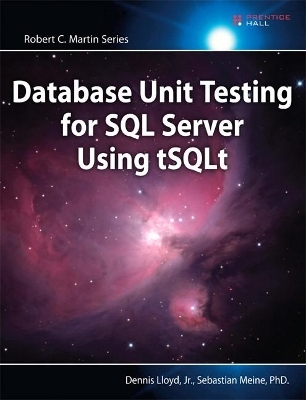
70-228 ALS Microsoft SQL Server 2000 System Administration Package
John Wiley & Sons Inc (Verlag)
978-0-470-06580-8 (ISBN)
- Titel ist leider vergriffen;
keine Neuauflage - Artikel merken
Competency-based learning for the academic classroom. Developed for academic courses, MICROSOFT® SQL SERVER™ 2000 SYSTEM ADMINISTRATION helps students build the skills they need on the job and for MCP Exam 70-228—an elective on the Windows® 2000 MCSE track. The textbook delivers Microsoft courseware adaptable for either a full 16-week semester or a 6-week, 8-week, or 10-week course. The book is filled with competency-based practice exercises that students complete on their own, while the companion project manual features additional skill-building activities ideal for your classroom’s computer lab.
Along with the textbook and project manual, students get a Student CD-ROM containing study aids, simulation video clips that demonstrate common procedures, an electronic version of the textbook, and detailed information on how to begin a career in Information Technology. Plus, they get a 120-day evaluation version of SQL Server 2000 Enterprise Edition.
An Instructor CD-ROM containing a complete set of instructor support materials—including lecture outlines, teaching tips, PowerPointâ slides, test banks, and an instructor lab manual—is also available.
Microsoft Corporation - Founded in 1975, Microsoft (Nasdaq ‘MSFT’) is the worldwide leader in software for personal and business computing. The company offers a wide range of products and services designed to empower people through great software—any time, any place and on any device.
About This Book. Chapter 1: Overview of SQL Server 2000.
Lesson 1: What Is SQL Server 2000?
Lesson 2: What Are the SQL Server 2000 Components?
Lesson 3: What Is the Relational Database Architecture?
Lesson 4: What Is the Security Architecture?
Chapter 2: Installing SQLServer 2000.
Lesson 1: Planning to Install SQL Server 2000.
Lesson 2: Deciding SQL Server 2000 Setup Configuration Options.
Lesson 3: Running the SQL Server 2000 Setup Program.
Lesson 4: Using Default, Named, and Multiple Instances of SQL Server 2000.
Lesson 5: Performing Unattended and Remote Installations of SQL Server 2000.
Lesson 6: Troubleshooting a SQL Server 2000 Installation.
Chapter 3: Preparing to Use SQL Server 2000.
Lesson 1: Reviewing the Results of Installation.
Lesson 2: Starting, Stopping, Pausing, and Modifying SQL Server 2000 Services.
Lesson 3: Working with Osql, SQL Query Analyzer, and SQL Server Enterprise Manager.
Chapter 4: Upgrading to SQL Server 2000.
Lesson 1: Preparing to Upgrade.
Lesson 2: Performing a Version Upgrade from SQL Server 7.0.
Lesson 3: Performing an Online Database Upgrade from SQL Server 7.0.
Lesson 4: Performing a Version Upgrade from SQL Server 6.5.
Chapter 5: Understanding System and User Databases.
Lesson 1: Understanding the Database Architecture.
Lesson 2: Understanding the Transaction Log Architecture.
Lesson 3: Understanding and Querying System and Database Catalogs.
Chapter 6: Creating and Configuring User Databases.
Lesson 1: Creating a User Database.
Lesson 2: Setting Database Options.
Lesson 3: Managing User Database Size Using Automatic File Growth Appropriately.
Lesson 4: Placing Database Files on Multiple Disks.
Chapter 7: Populating a Database.
Lesson 1: Transferring and Transforming Data.
Lesson 2: Introducing Microsoft Data Transformation Services (DTS).
Lesson 3: Transferring and Transforming Data with DTS Graphical Tools.
Lesson 4: Working with DTS Packages.
Lesson 5: Using the Bulk Copy Program (Bcp) and the BULK INSERT Transact-SQL Statement.
Chapter 8: Developing a Data Restoration Strategy.
Lesson 1: Understanding Data Restoration Issues.
Lesson 2: Understanding the Types of Database Backups.
Lesson 3: Understanding the Restoration Process.
Chapter 9: Backing Up and Restoring SQL Server.
Lesson 1: Understanding Backup Terms, Media, and Devices.
Lesson 2: Backing Up Databases, Files, Filegroups, and Transaction Logs.
Lesson 3: Restoring a User Database.
Lesson 4: Restoring and Rebuilding System Databases.
Chapter 10: Managing Access to SQL Server 2000.
Lesson 1: Understanding the Authentication Process.
Lesson 2: Understanding the Authorization Process.
Lesson 3: Creating and Managing Logins.
Chapter 11: Managing SQL Server Permissions.
Lesson 1: Granting Database-Specific Permissions.
Lesson 2: Using Application Roles.
Lesson 3: Designing an Access and Permissions Strategy.
Chapter 12: Performing Administrative Tasks.
Lesson 1: Performing Configuration Tasks.
Lesson 2: Setting Up Additional Features.
Lesson 3: Performing Maintenance Tasks.
Chapter 13: Automating Administrative Tasks.
Lesson 1: Defining Operators.
Lesson 2: Creating Jobs.
Lesson 3: Configuring Alerts.
Lesson 4: Creating a Database Maintenance Plan.
Lesson 5: Creating Multiserver Jobs.
Chapter 14: Monitoring SQL Server Performance and Activity.
Lesson 1: Developing a Performance Monitoring Methodology.
Lesson 2: Choosing Among Monitoring Tools.
Lesson 3: Performing Monitoring Tasks.
Chapter 15: Using SQL Server Replication.
Lesson 1: Introducing Replication.
Lesson 2: Planning for Replication.
Lesson 3: Implementing Replication.
Lesson 4: Monitoring and Administering Replication.
Chapter 16: Maintaining High Availability.
Lesson 1: Using Standby Servers.
Lesson 2: Using Failover Clustering.
APPENDIX.
GLOSSARY.
INDEX.
| Erscheint lt. Verlag | 1.7.2001 |
|---|---|
| Verlagsort | New York |
| Sprache | englisch |
| Maße | 185 x 229 mm |
| Gewicht | 1673 g |
| Themenwelt | Informatik ► Datenbanken ► SQL Server |
| Mathematik / Informatik ► Informatik ► Software Entwicklung | |
| ISBN-10 | 0-470-06580-X / 047006580X |
| ISBN-13 | 978-0-470-06580-8 / 9780470065808 |
| Zustand | Neuware |
| Haben Sie eine Frage zum Produkt? |
aus dem Bereich


